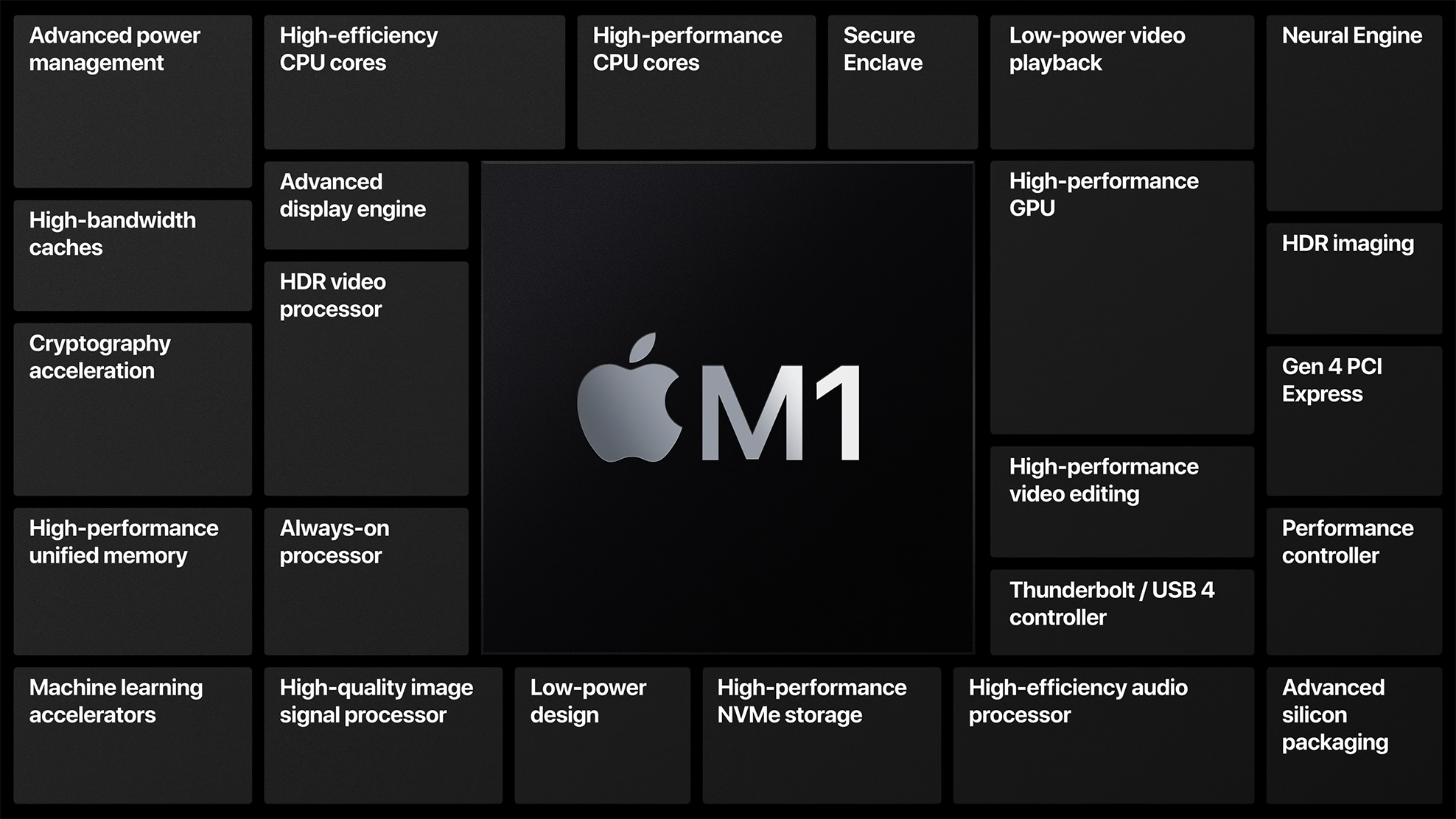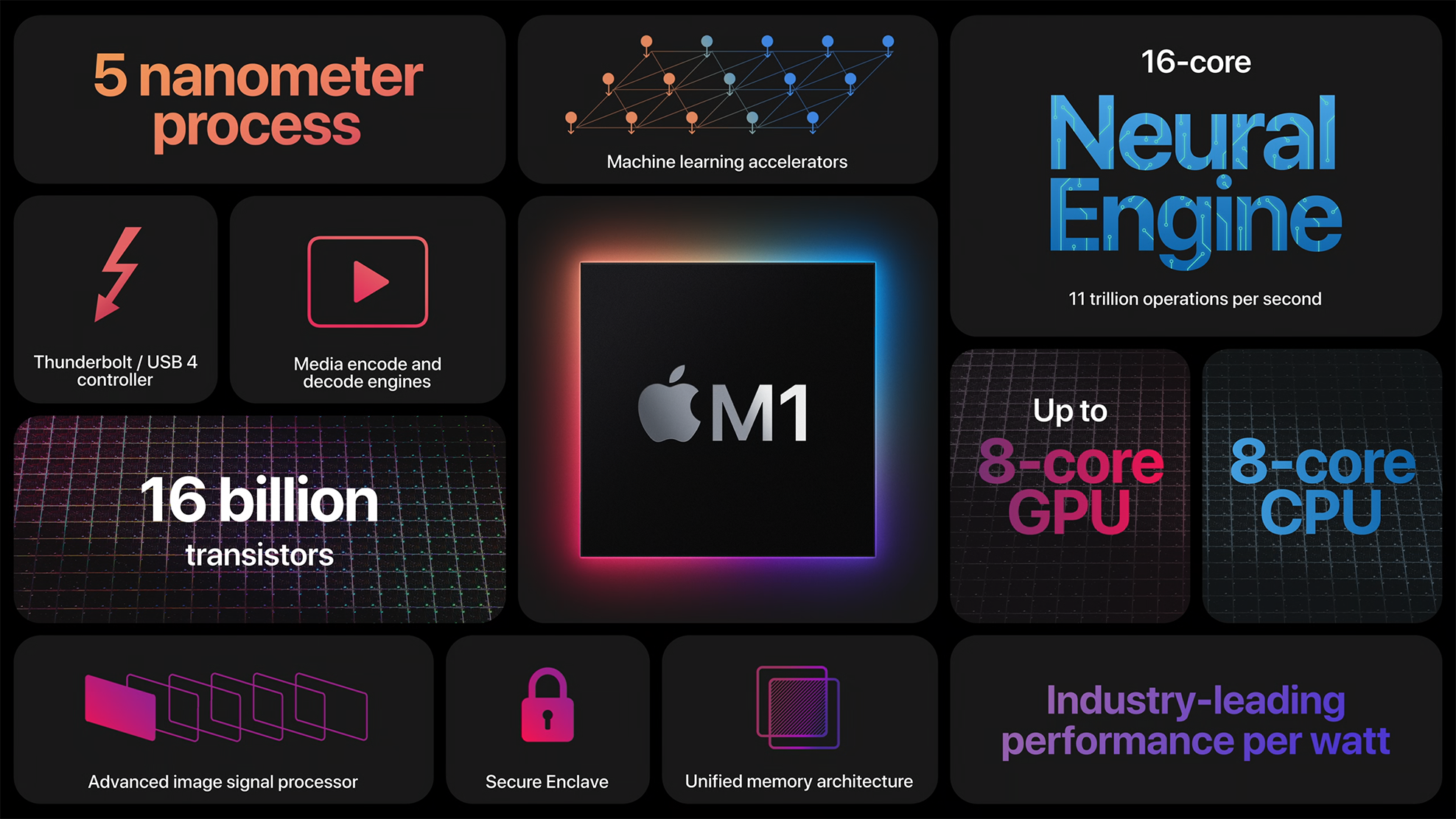I just watched the One More Thing event about the new Apple M1 chip. I noticed on social media many people treat it as just another announcement of a new chip—better performance, higher efficiency. However, I believe it’s more than that. Here are my quick thoughts.
The essence of the shift from Intel processors to the Arm-architecture Apple Silicon is the trend of a finer division of professional skills.
Historically, for every industry, an organization tends to do all works by itself at the beginning. But as requirements got more complex and solutions advanced, professional solutions providers will emerge and offer better options at a lower cost. Just like what’s happening in the aviation industry, companies like Boeing and Airbus outsourced most of the components to sector suppliers like GE, Honeywell, Bosch, etc.
The same happened in the computer industry as well. All computer makers outsource their components to companies like AMD, Intel, Western Data, TDK, etc.
However, this time, the diversification goes further in one vertical—processor. For past decades, processor vendors like Intel have been designing as well as manufacturing chips. As the manufacturing process moves to finer and finer scale, it became hard to keep a leading position on both design and fabrication. AMD spun off its manufacturing arm as an independent foundry and focus on the design, so did nVidia and others.
In the meantime, foundries like TSMC focus solely on manufacturing. It not only uses leading foundry equipment but also became a shareholder of the leading lithography equipment provider ASML. This fortifies TSMC as THE most advanced manufacturer for chips.
The move will separate Apple products further away from competitors who are using off-the-shelf components from Intel (computers) and Qualcomm (mobile devices).
Traditionally computer makers can only purchase off-the-shelf chips from Intel, AMD, IBM, VIA. No matter it’s Asus, Lenovo, HP, or whatever, you will find similar chips. The performance gap between different brands was really thin. Not to mention they ALL ran on Microsoft Windows. The experience difference really depended on industrial design and branding.
As Apple moves to have their own Apple Silicon chips, the Mac will no longer be limited by the rest of the entire PC market—which Intel need to consider holistically when designing for CPU architecture. This move will separate Mac’s performance and efficiency from the rest of the market. And it will be very hard for computer market competitors like Samsung, Dell or HP to follow, as most of their offerings run on Windows, and this determined it will not be easy for them to follow Apple’s route to have Samsung CPU or Dell CPU unless Microsoft makes it easier to do so.
But Apple owns both hardware and software, the latest Big Sur macOS has been architected around the M1 CPU, this is a unique advantage of Apple.
This will benefit professional domain suppliers, i.e. TSMC in this case.
Even though it will be hard to follow for Dells, but I anticipate competitors could potentially consider following the Apple route. Especially if Google pushes further the Android product line to match macOS.
The competitors would either design their own chips (Samsung can do it) or Intel could shift the route to outsource manufacture to professional foundries. TSMC as the finest manufacturer of chips will benefit greatly from this transition.
In general, it is more than an upgrade of CPU. It is an economic phenomenon that will shape desktop computing for the next decades. But just like John Ternus, the VP of Hardware Engineering of Apple said in today’s event:
The transition to Apple Silicon is going to have a profound impact on the Mac…this journey will take a couple of years to complete…
In my view, this is a strategic move. Currently, Apple owns 7.7% of the global computer market (2020). I anticipate the combined supremacy of differentiated computing performance brought by the Apple Silicon and extraordinary macOS experience will result in a significant increase of Apple’s Mac market share, potentially double or triple in a decade—an assumption based on iPhone’s market share gained by the same beauty of the product—best performance and experience.

